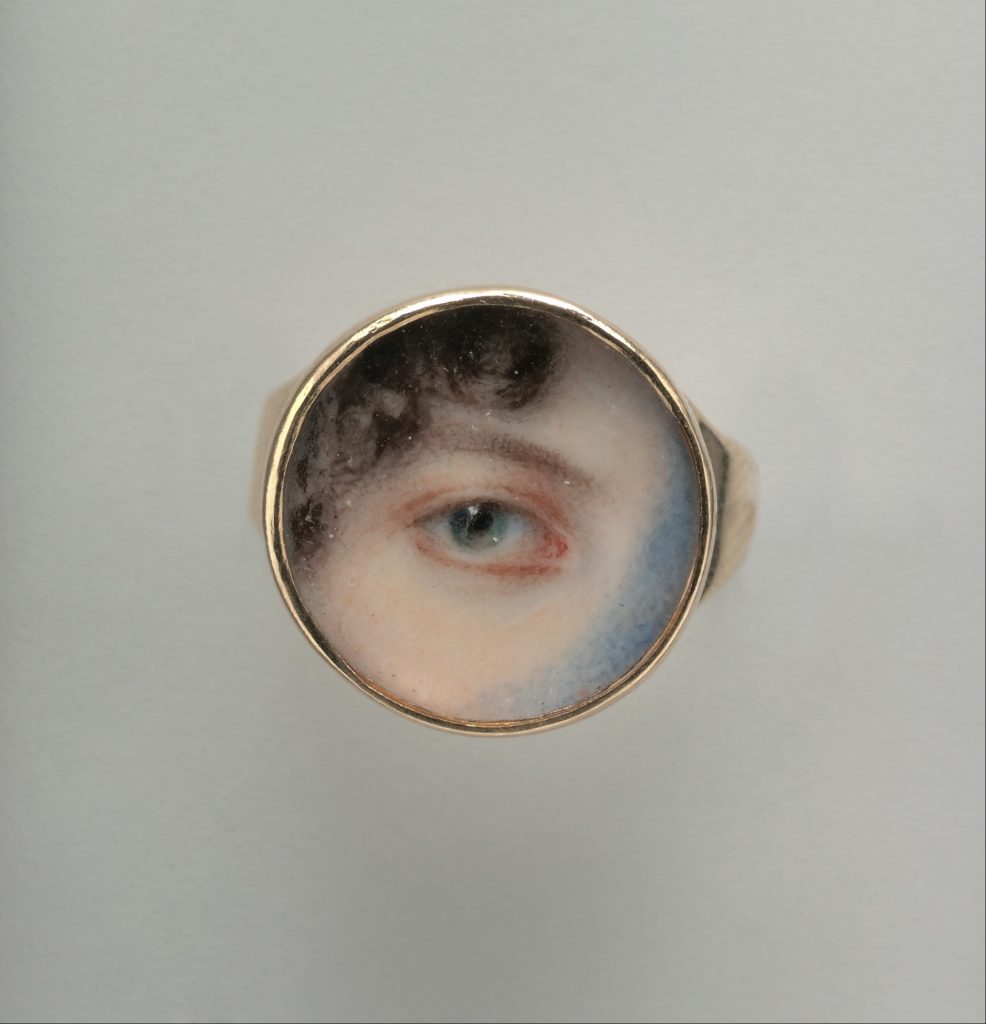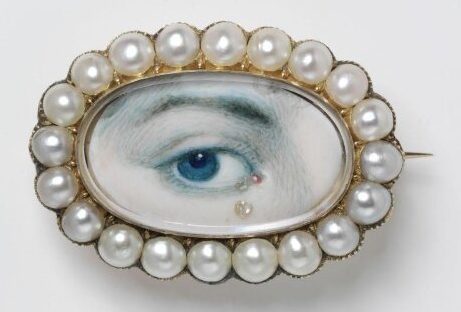
Is today’s society more self-absorbed than those that preceded it? It’s easy to think of life today as a meaningless sea of selfies and solipsism, but arguably humans have always wanted to depict and to promote themselves to similar degrees. Just look at the gifts we give each other. Look at gifts given through history; then consider eye miniatures.
These were Georgian keepsakes which depicted the eye of a loved one or spouse, a fashion that is said to have originated when the Prince of Wales (later George IV) wished to send widow Maria Fitzherbert a token of his love: a miniaturist was hired to paint only his eye, rather than a full portrait, in order to preserve a form of anonymity and decorum.
The Victoria & Albert Museum says that in Britain, eye miniatures were an “extremely intense manifestation of an already emotionally charged art [that of portrait miniatures]”, with some eye miniatures even glistening with a trompe-l’oeil tear, or even a diamond set to imitate a tear. However, in Treasuring the Gaze: Intimate Vision in Late Eighteenth-Century Eye Miniatures, Hanneke Grootenboer argues that eye miniatures portray the subject’s gaze, rather than his or her eye, “making the recipient of the keepsake an exclusive beholder who is perpetually watched”.
Makes sense. Think of all the pop songs about looking and gazing, and the beauty of eyes. Think about all the phrases and sayings which laud eyes as windows to the soul.
An eighteenth century fashion they may have been: but where can eye miniatures be found today? In the United States, several can be seen in the northeast at the Metropolitan Museum in New York, the Philadelphia Museum of Art, and Boston’s Museum of Fine Arts. But with international lockdown prohibiting travel at the time of writing, perhaps selfies will have to suffice.

